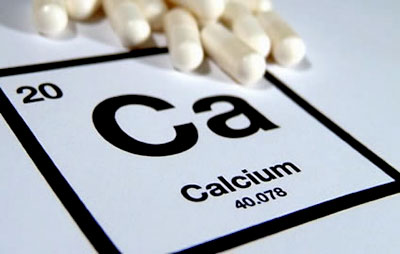|

by April McCarthy
February 17, 2013
from
PreventDisease Website
Spanish version
|
April McCarthy is a
community journalist playing an active role reporting
and analyzing world events to advance our health and
eco-friendly initiatives. |
For the first time scientists studying the cellular processes
underlying the body's response to healing have revealed how a
flash of calcium is the very first step in repairing damaged
tissue.
The findings (Calcium
Signaling - Deciphering the Calcium-NFAT Pathway),
published in Current Biology, could lead to new therapies
that speed up the healing process following injury.

Until recently, very little was known about how damaged tissue
activates and attracts the first white blood cells to the wound -
the first stage in the healing process.
However, researchers from the University
of Bristol's School of Biochemistry in collaboration with a team
from the University of Bath, have shown that the very first trigger
in this process is a flash of calcium which spreads like a wave back
from the wound edge through gap junctions that connect all the
cells.
This flash of calcium signal goes on to activate an enzyme known as
DUOX that synthesizes
hydrogen peroxide (H2O2), which, in turn, attracts
the first white blood cells to the wound. This white blood cell
invasion, which is initiated during our inflammatory responses, is
needed to kill off invading microbes and stop the onset of
septicemia following tissue damage.
The findings indicate that the wound-induced calcium flash
represents the earliest identified signal following wounding and
might therefore orchestrate the rapid recruitment of immune cells.
To assess the impact of a reduced calcium flash upon the
inflammatory response the team used
Drosophila (fruit fly) embryos
because they are translucent which makes it easy to image the
inflammatory response and because of their simple genetics.
The team found that blocking the calcium
flash inhibited H2O2 release at the wound site
leading to a reduction in the number of immune cells migrating to
the wound.
Paul Martin, Professor of Cell Biology and an expert in wound
healing at the University, said:
"White blood cells are a little like
'Jekyll and Hyde' in that they help us heal but are also the
reason behind why we scar so we really need to know how they are
regulated at wounds in order to learn how to control their
behaviors for future therapeutic intervention."
Will Razzell, the lead PhD
researcher on this study, added:
"We are more than ever understanding
the pathways that lead to immune cell attraction to wounds. As
calcium represents the immediate inflammatory signal, we now
have a good foundation to investigate this complicated process
further."
|

